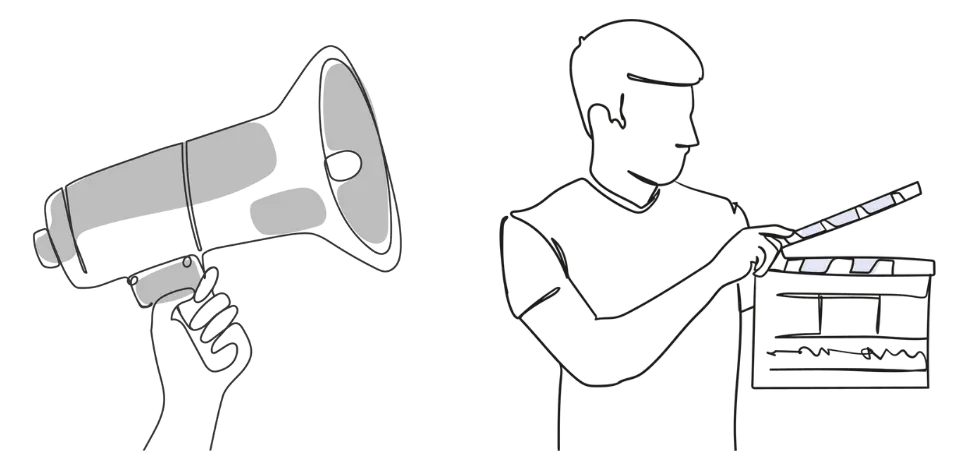
Elevate Your Visuals: The Essential Equipment for Best-Quality Video Production
As a leading video production house in India, we understand that achieving “best quality” isn’t just a buzzword; it’s a commitment to excellence. While creativity and storytelling are paramount, the right equipment forms the backbone of truly impressive video production. In a dynamic market like India, where diverse projects demand versatile solutions, choosing your gear wisely is crucial.
So, what should you prefer to get the best quality video production? Let’s break down the essential categories and our top recommendations, keeping in mind the unique needs and trends of the Indian video landscape.
1. The Visual Powerhouse: Cameras and Lenses
Your camera is the heart of your visual storytelling. For best quality, we look for cameras that offer:
- High Resolution (4K and beyond): While Full HD (1080p) is still widely used, 4K is becoming the standard for professional projects, offering incredible detail and flexibility in post-production. Look for cameras that can shoot in 4K at various frame rates (e.g., 60p, 120p for slow-motion). Some advanced cameras now even offer 6K or 8K, providing even more room for reframing and future-proofing.
- Large Sensors (Full-frame or Super 35/APS-C): Larger sensors generally mean better low-light performance, shallower depth of field (that beautiful blurred background), and a more cinematic look.
- Good Dynamic Range: This refers to the camera’s ability to capture detail in both bright highlights and deep shadows, crucial for visually rich and professional-looking footage.
- Robust Codecs and Internal Recording Capabilities: Cameras that record in higher bitrates and more efficient codecs (like ProRes, H.265) offer more flexibility for color grading and editing.
Our Recommendations for Cameras:
- Mirrorless Cameras (e.g., Sony Alpha series like a7S III, a7 IV; Panasonic Lumix GH6/S5 II; Canon EOS R series): These are incredibly versatile, offering excellent video capabilities in compact bodies. They are a popular choice for everything from corporate films to documentaries and even indie features in India.
- Dedicated Cinema Cameras (e.g., Blackmagic Pocket Cinema Camera 4K/6K, Canon C series, Sony FX series): For projects demanding the absolute best in image quality, color science, and cinematic features, these cameras are unparalleled. They often come with professional audio inputs and better ergonomics for film sets.
- Lenses: Don’t underestimate the power of good glass! Invest in a range of lenses including:
- Versatile Zoom Lenses: A good standard zoom (e.g., 24-70mm f/2.8) and a telephoto zoom (e.g., 70-200mm f/2.8) are workhorses for various shooting scenarios.
- Fast Prime Lenses: For cinematic depth of field and superior low-light performance, a set of prime lenses (e.g., 35mm, 50mm, 85mm at f/1.8 or f/1.4) is indispensable.
- Specialty Lenses: Depending on your niche, consider macro lenses, wide-angle lenses for landscapes, or anamorphic lenses for a unique cinematic look.
2. The Unsung Hero: Audio Equipment
Crystal-clear audio is often overlooked but can make or break a video. Bad audio is far more distracting than slightly imperfect visuals.
Our Recommendations for Audio:
- Microphones:
- Lavalier Mics (Lapel Mics): Essential for interviews and dialogue, providing clean, isolated audio directly from the subject. Both wired and wireless options are crucial.
- Shotgun Mics: Ideal for capturing directional audio, reducing background noise, and often mounted on cameras or boom poles.
- Handheld Mics: Useful for capturing ambient sound, journalistic interviews, or situations where a lavalier isn’t feasible.
- External Audio Recorders (e.g., Zoom H series, Tascam): While many cameras have audio inputs, a dedicated external recorder provides superior sound quality, more control over audio levels, and redundancy.
- Boom Poles and Stands: For positioning shotgun microphones effectively out of frame.
- Headphones (Monitoring): High-quality headphones are non-negotiable for monitoring audio during recording to catch any issues in real-time.
3. Sculpting with Light: Lighting Equipment
Lighting transforms a scene, creating mood, depth, and clarity. Even the best camera won’t deliver stunning visuals without proper lighting.
Our Recommendations for Lighting:
- LED Panels: Versatile, power-efficient, and portable, LED panels are a staple for various video productions. Look for bi-color or RGB panels for adjustable color temperature and creative lighting.
- Softboxes and Umbrellas: Essential for diffusing light, creating soft, even illumination, and reducing harsh shadows.
- Fresnel Lights: For more focused and controllable beams, often used for key lighting or to create dramatic effects.
- Reflectors and Flags: Simple yet effective tools for bouncing light, filling shadows, or blocking unwanted light.
- Light Stands: Sturdy stands are crucial for positioning your lights securely.
4. Smooth Moves: Stabilization Gear
Shaky footage screams “amateur.” Professional video demands smooth, stable shots.
Our Recommendations for Stabilization:
- Tripods with Fluid Heads: Absolutely essential for static shots, interviews, and smooth pans and tilts. A good fluid head makes a world of difference.
- Gimbals/Stabilizers: For dynamic, flowing shots while moving. These motor-driven devices keep your camera perfectly level, even when walking or running. Popular brands include DJI Ronin, Zhiyun, and Feiyu.
- Sliders and Dollies: For controlled, smooth camera movements along a linear or curved path, adding production value to your shots.
5. The Post-Production Powerhouse: Editing Hardware & Software
The magic truly happens in post-production. You need a robust system to handle high-resolution footage and powerful software to bring your vision to life.
Our Recommendations for Post-Production:
- Powerful Computer: A fast processor (Intel i7/i9 or AMD Ryzen equivalent), ample RAM (32GB or more), a dedicated graphics card (NVIDIA GeForce RTX or AMD Radeon Pro), and fast SSD storage are crucial for smooth editing of 4K footage.
- Professional Editing Software:
- Adobe Premiere Pro: Industry-standard, highly versatile, and integrates seamlessly with other Adobe Creative Cloud applications (After Effects for motion graphics, Audition for audio).
- DaVinci Resolve: A powerful and increasingly popular option, known for its exceptional color grading capabilities (the free version is incredibly robust).
- Final Cut Pro (for Mac users): A streamlined and efficient editing suite favored by many Mac-based professionals.
- External Hard Drives: For reliable and abundant storage of your raw footage and project files.
The Indian Context: Making Smart Choices
In India, where budgets can vary widely and accessibility to certain equipment might be a factor, consider these points:
- Rentals: For high-end, specialized equipment that you don’t need regularly, renting is an excellent and cost-effective option. India has a growing network of equipment rental houses.
- Local Brands & Distributors: Explore reputable Indian distributors for equipment. They often offer competitive pricing and better after-sales service.
- Hybrid Setups: Don’t feel pressured to buy everything at once. Start with essential gear and gradually upgrade as your projects and budget allow. Many successful Indian production houses started with modest setups.
- Versatility is Key: Choose equipment that can adapt to different types of projects – from corporate films and commercials to music videos and documentaries.
Ultimately, the “best quality” in video production isn’t solely about owning the most expensive gear. It’s about understanding your tools, mastering their capabilities, and combining them with your creative vision to tell compelling stories. As a production house, our commitment is to leverage the finest equipment and talent to deliver visuals that truly resonate with our audience and exceed client expectations.
Ready to bring your story to life with unparalleled quality? Open-Window Films is here to make it happen. Contact us today!


